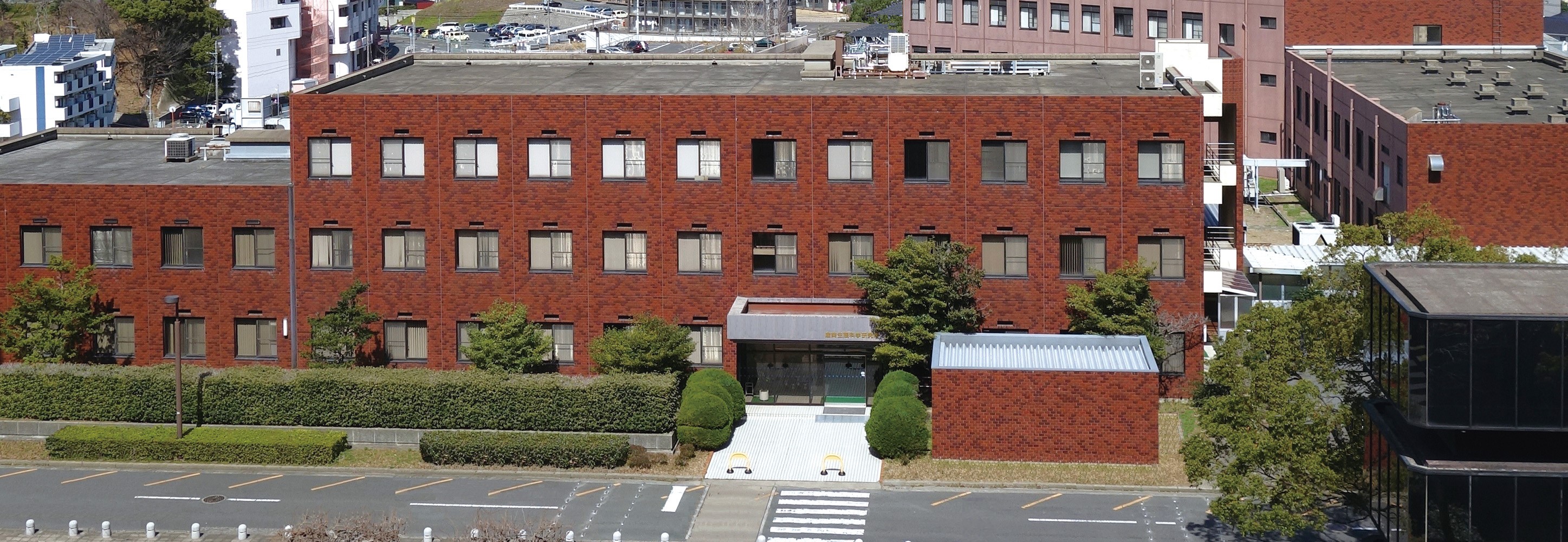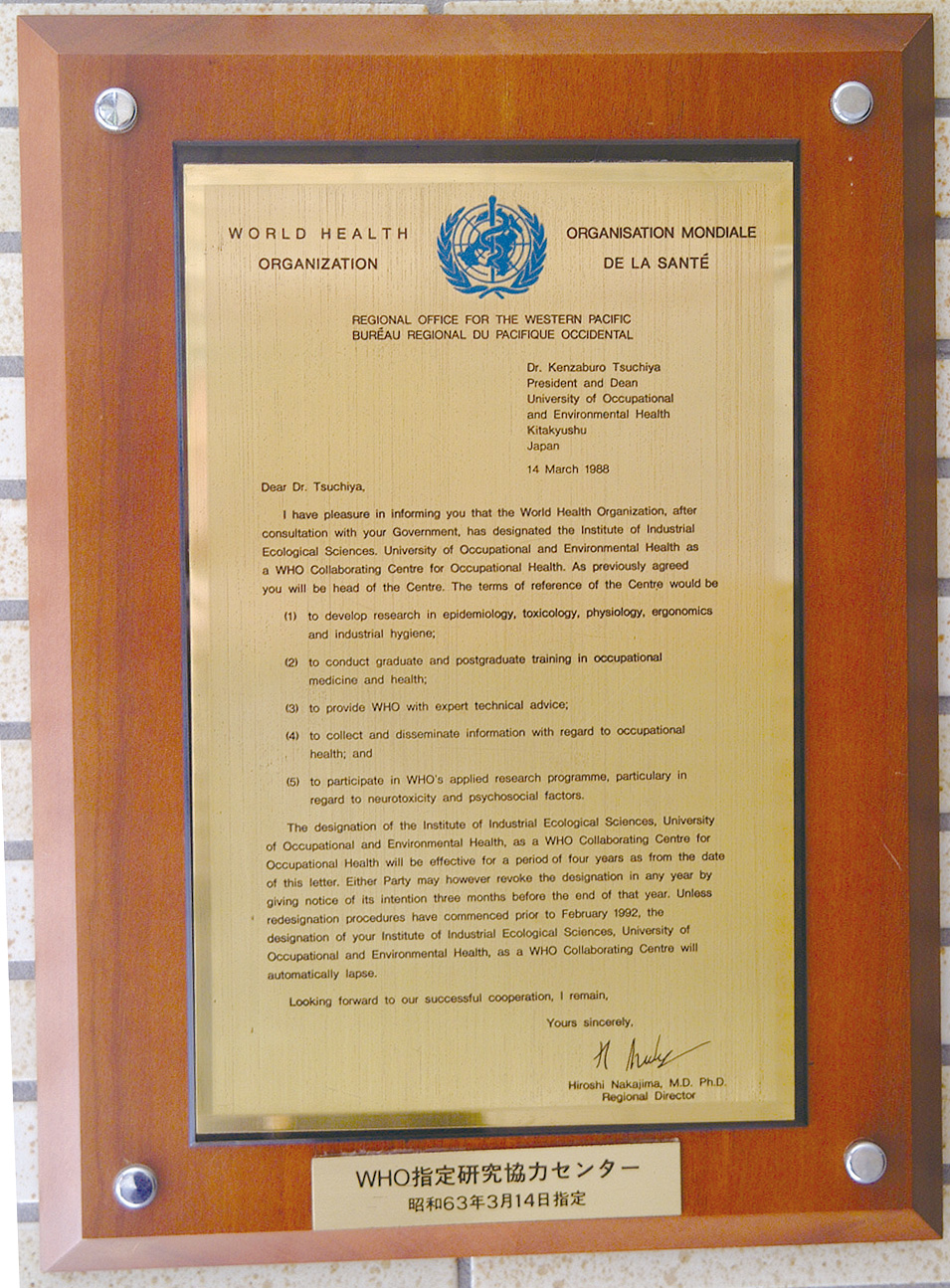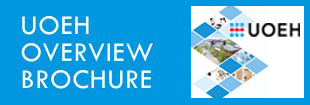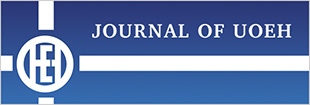
This institute (IIES) has been accredited as a designated WHO Collaborating Center (WHO CC) in the field of occupational health by the World Health Organization (WHO) for ten consecutive terms since 1988, following a rigorous review of its requirements every four years. (As of January 2025, there are 33 WHO CC facilities in Japan, including 11 universities, of which 2 are in Kyushu, and in the field of occupational health, only two WHO CCs exist: this institute and the National Institute of Occupational Safety and Health.)

“De
Morbis
Artificum
Diatriba”
by
Bernardini
Ramazzini

Certificate
of
WHO
Collaborating
Center
(WHO
CC)
for
Occupational
Health
◆ Groups and Departments
| Environmental Health Engineering | 労働衛生工学 | ||
| Environmental Oncology | 職業性腫瘍学 | ||
| Occupational Pneumology | 呼吸病態学 | ||
| Ergonomics | 人間工学 | ||
| Radiobiology and Hygiene Management | 放射線衛生管理学 | ||
| Health Policy and Management | 産業保健管理学 | ||
| Mental Health | 産業精神保健学 | ||
| Health Development | 健康開発科学 | ||
|
Group
for
|
Environmental Epidemiology | 環境疫学 | |
| Occupational Toxicology | 職業性中毒学 | ||
| Work Systems and Health | 作業関連疾患予防学 | ||
| Occupational Health Practice and Management | 産業保健経営学 |
| Disaster Occupational Health Center 災害産業保健センター |
Education at the Graduate School of Medical Science, School of Medicine and School of Health Sciences
Faculty members of the IIES are in charge of courses related to occupational medicine, which correspond to the areas of expertise of their respective laboratories. The faculty also provide educational guidance to graduate students, and actively cooperate with the School of Medicine on education, especially in the field of occupational medicine.
1 Objective and state
2 Historical Profile
5 Research
6 Education and Training
7 International Collaboration
8 WHO Collaborating Center for Occupational Health
9 Access
◆ Fundamental Course on Occupational Health
The fundamental course in occupational health systematic and intensive course covering the activities of occupational physicians from the basics to practice. With the aim of positioning the University to promote occupational medicine and support the training of occupational physicians, the course was opened in 1984 in order to provide systematic and intensive education in occupational medicine, which had not been sufficiently provided in pre-graduate education. Additionally, in accordance with the revision of the Industrial Safety and Health Regulation in 2009, the course has been accredited as required training for the qualification of occupational physicians to be conducted by those designated by the Minister of Health, Labour and Welfare.
Teaching Method
Participants acquire basic knowledge as occupational health physicians through lectures on the outline of occupational and environmental health, and practical training in small groups.
Qualification
Those
who
have
completed
all
the
courses
and
lectures
in
this
curriculum
(medical
doctors
and
dentists
only)
are
exempted
from
taking
the
written
test
of
the
"Industrial
Health
Consultant
Examination",
and
are
additionally
regarded
as
having
completed
the
fundamental
training
or
higher
training
according
to
the
specification
by
the
Japan
Medical
Association
in
its
Authorized
Occupational
Health
Physician
System,
and
Social
Medicine.
Further,
this
course
corresponds
with
systematic
fundamental
training
concerning
occupational
health
science,
one
of
the
qualification
requirements
for
taking
the
Specialist
Physician
Examination
of
the
Japan
Society
of
Occupational
Health.



 Request
for
documents
Request
for
documents




